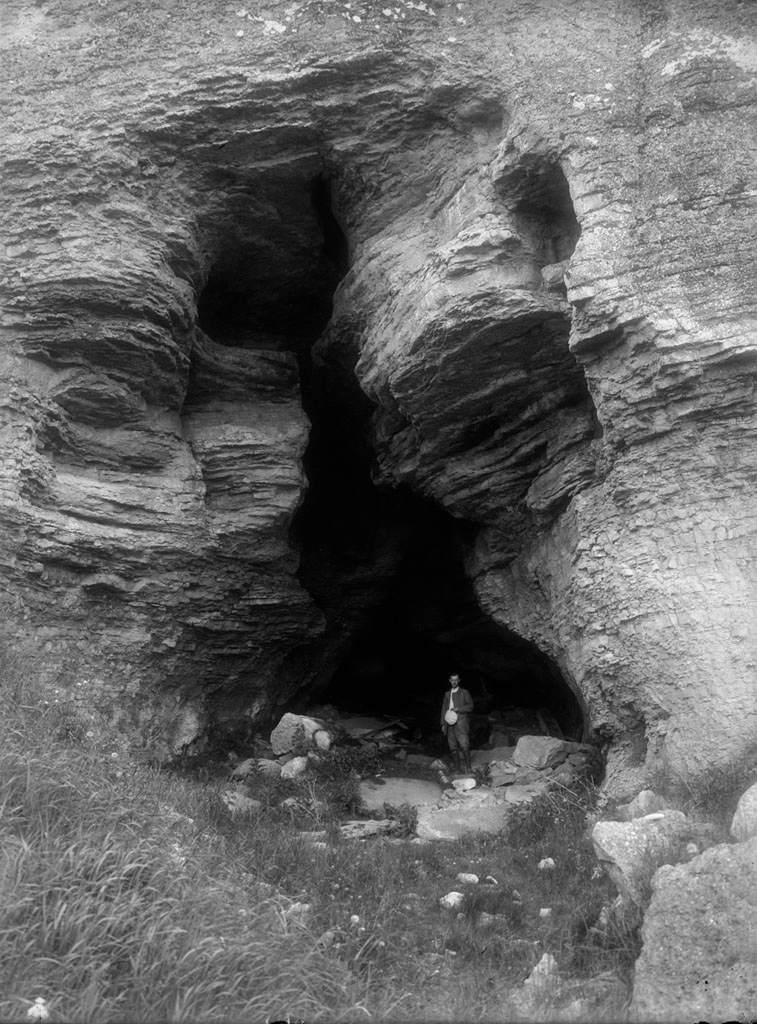For men of consequence a mound should be raised to their memory, and for all other warriors who had been distinguished for manhood a standing stone, a custom that remained long after Odin’s time.
– Ynglinga saga –

– The Curman children with their french governess beside a rune stone, Antuna, Stockholm, Sweden –
A runestone is typically a raised stone with a runic inscription, but the term can also be applied to inscriptions on boulders and on bedrocks. The tradition began in the 4th century, and it lasted into the 12th century, but most of the runestones date from the late Viking Age. Most runestones are located in Scandinavia, but there are also scattered runestones in locations that were visited by Norsemen during the Viking Age. Runestones are often memorials to deceased men.
Runestones, standing stones. Their beauty, their power.
The Swedish Heritage National Board gallery is filled with very old photographs of these stones. I am particularly touched by people standing tall and proud next to the stones, wearing their most elegant attire. One day, I will be standing next to them, too! May it be sooner rather than later…
In the meantime, here are some of my favourite photographs.
Δ Δ Δ
-m-

– Cave of Stora Förvar with Stone Age settlement, Stora Karlsö, Gotland, Sweden –

– Boy and men at boulder with runic inscription, Ed Uppland, Sweden –

– Same boulder with runic inscription, Ed Uppland, Sweden –

– Runic inscription at Kiholm, Södermanland, Sweden –

– Rock carving, Västra Röd, Bohuslän, Sweden –

– Runic inscription – The Sigurd Carving, Jäder, Södermanland, Sweden –

– Children at runic inscription from 1678, Risinge, Östergötland, Sweden –

– Three girls beside a runestone, Herrstaberg, Sweden. The inscription says ‘Vibern raised this stone in memory of Solva, his brother’ –

– Runestone Rökstenen, Östergötland, Sweden –

– Runestone, Boberg, Östergötland, Sweden –
– f r e n c h –
Pour les hommes d’importance une butte sera érigée en leur mémoire, et pour tous les autres soldats ayant obtenu une distinction pour leur virilité une pierre levée, une coutume qui perdure longtemps après l’ère d’Odin.
– Ynglinga saga –

– Les enfants Curman et leur gouvernante française près d’une pierre runique, Antuna, Stockholm, Suède –
Une pierre runique est une pierre dressée (bien que l’expression s’applique également à des rochers ou à des socles rocheux) gravée d’inscriptions runiques. Érigées entre les IVème et XIIème siècles, et principalement à la fin de l’ère des Vikings, la plupart sont situées en Scandinavie, bien qu’il en existe également dispersées en dehors de cette région. Il s’agit souvent de monuments à la mémoire de personnes décédées.
Les pierres levées, les pierres runiques. Leur beauté, leur puissance.
La galerie du Swedish Heritage National Board est remplie de photos anciennes représentant ces pierres. Je suis particulièrement touchée par les gens se tenant droits et fiers aux côtés de ces pierres, vêtus de leurs plus beaux atours. Un jour, moi aussi je me tiendrai auprès d’elles ! Et pourvu que cela soit le plus tôt possible …
En attendant, voici une sélection de mes photos favorites.
Δ Δ Δ
-m-